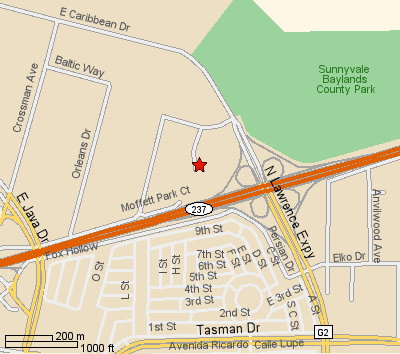|
|
|
 | ||
|
| ||
 September 17, 2003 -- NOTE that this is one week
later than our "usual" second-Wednesday meeting, and at a different place!
September 17, 2003 -- NOTE that this is one week
later than our "usual" second-Wednesday meeting, and at a different place!
Wyndham Hotel in Sunnyvale (this meeting only)
PLEASE RESERVE IN ADVANCE --
There are also various polymer/metallurgical interactions, resulting in long term packaged-device reliability problems, that can occur as the result of the wire bonding process over low modulus, Lo-k materials with barriers. These include cracked diffusion barriers, copper diffusion rates into the Lo-k polymers, cracking/spalling/crazing of the Lo-k materials, and bond pad indentation ("cupping"). Low-k polymer materials, with high expansion coefficients and low thermal conductivities, can also increase the stress and further extend any existing damage to barriers as well as increase the probability of electromigration of the copper lines. Many of the above problems have been previously encountered when bonding to pads over polymers (MCM-D, polymer buildup-layers on PCBs, PBGAs, flex circuits, etc.), and they share some of the same solutions. Well-designed Lo-k and the underpad structures should have no negative effect on bonding parameters and be invisible to the bonding process.
For additional technical background in wire bonding, see the description for the one-day short course on Tuesday, September 16, "Principles in Wirebonding for Microelectronics."
|
SCV Chapter
Home Page |
How to Join IEEE |
Contact our Chapter Chair |
| CPMT Society
Home Page |
IEEE Home Page |
Email
to Webmaster |
Last updated on